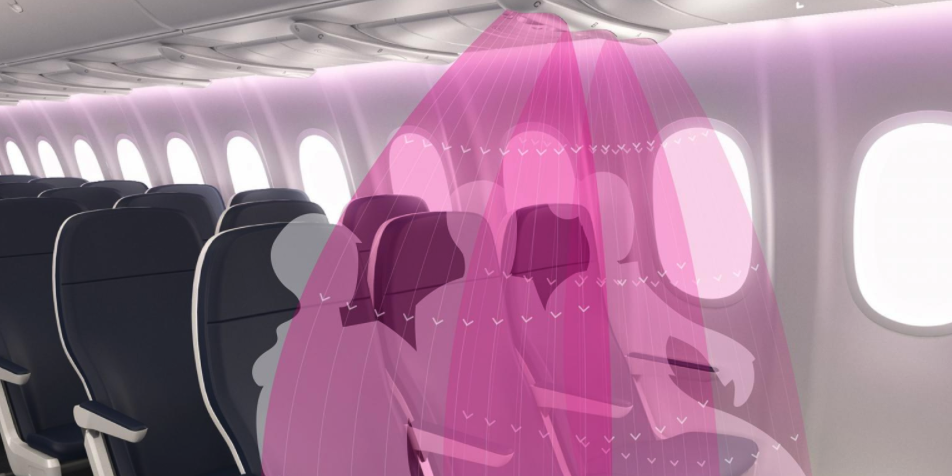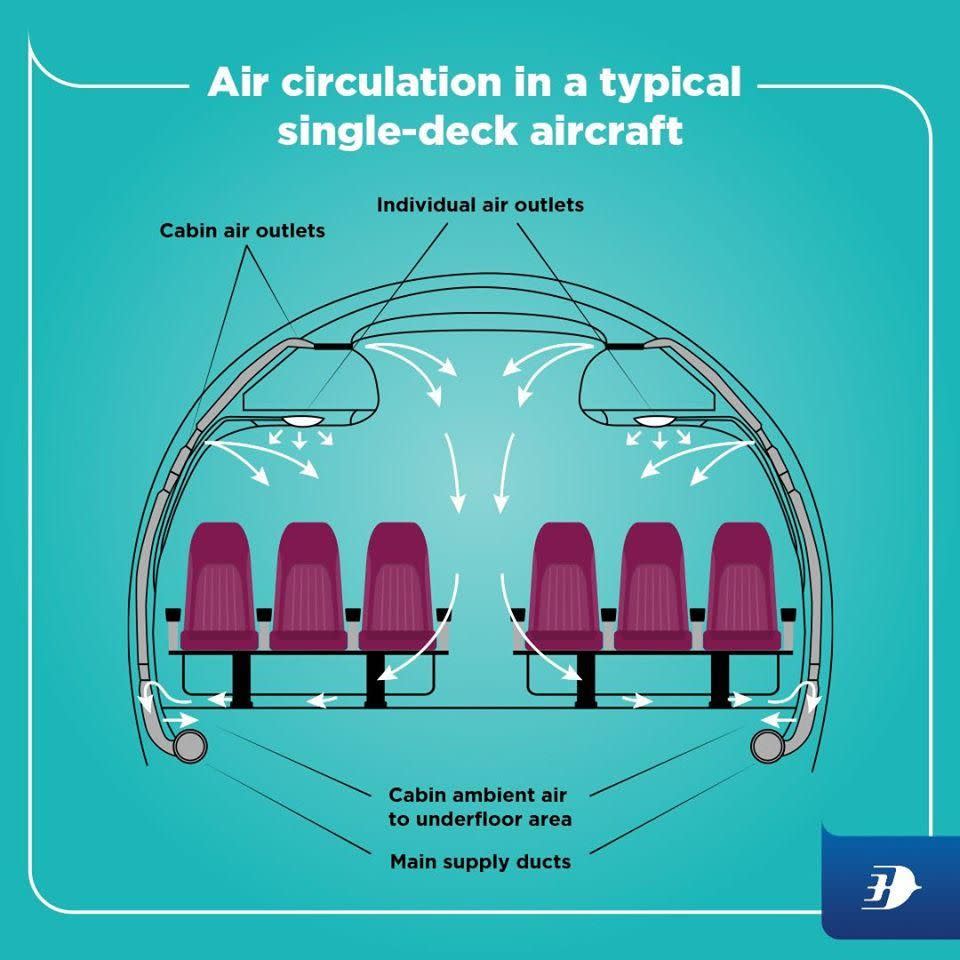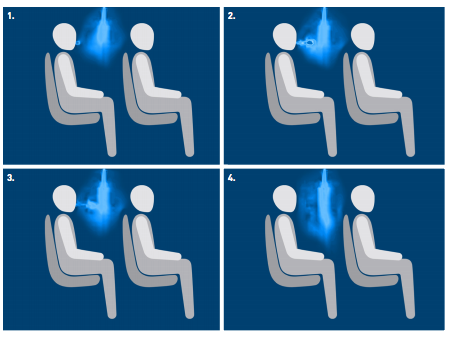Will This Invisible Germ Isolation Unit Make Flying Safe Again?

Teague, a design firm in Seattle, has come up with a new concept for safe flights amid the COVID-19 (coronavirus) pandemic.
Rather than rely on physical distancing or barriers, the company has introduced AirShield, which directs passengers' exhaled air or sneezes downward.
By using the aircraft's existing HEPA filter jets, the cost remains relatively low.
You've probably been stuck next to someone on a flight who blasts icy air in your direction from the overhead air jets. But what if those filtration units could actually help stop the spread of COVID-19 (coronavirus) particles circulating through aircraft cabins?
That's exactly what Seattle-based design firm Teague wants to do. To set up precautionary measures for even the most extreme cases (like someone coughing or sneezing without a mask), the company plans to rehab existing High-Efficiency Particle Filters (HEPA) onboard most aircrafts.
The mission: redirect air downward at high pressure so it never circulates to your neighbors, keeping even the person in the middle seat safe.
"As airlines battle to solve the impossible ask of re-creating 'safe' social distancing requirements in crowded cabins, it could be that the industry is looking to develop a solution to the wrong problem," Teague writes in a blog post. "Rather than distance, it's airflow that plays the most significant role in the spread of COVID-19 in an airplane."
Typically, HEPA jets filter and recirculate air from the cabin, mixing it together with fresh air. You can see them along the ceilings and walls of the aircraft. These systems can completely switch out the air in the fuselage 15 to 30 times per hour, or once every 2 to 4 minutes.
The International Air Transport Association says in a briefing paper that the filters are "effective at capturing greater than 99 percent of the airborne microbes in the filtered air."

But Teague's proposed design takes things a step further, creating an invisible germ isolation unit with "blades" of air. The company is calling it "AirShield," and it functions similarly to those warm or cool air curtains you may have noticed while walking into airports or retail stores.
While those are typically meant to keep cool or warm air inside to control the temperature in a space—or keep bugs and smoke out—the AirShield concept creates a barrier around each set to disrupt the normal flow of air. That creates a de-facto shield for coughs, sneezes, or any other particulate matter, immediately directing it downward and out of the cabin to the HEPA filtration units.
Enter those overhead jets, which also go by the awkward name "personal air gaspers." A March 2008 paper in the Journal of Aircraft suggests that in addition to cooling passengers down, they could offer bonus protection against the spread of viruses, even between neighboring seats.
To take advantage of that concept, Teague had to play around with the shape and position of the air jets, eventually engineering a "grill" of 3D-printed nozzles that technicians can simply retrofit over the existing air gaspers.
"[W]ith just one grill per seat row, the 60 grills required to fit a narrow-body aircraft could be fitted overnight," the company says in a white paper.

Your typical single-deck airplane also features an underfloor area for the ambient air, so as the AirShield system directs blades of air downward—along with any particulate matter—the HEPA filtration system can carry the discarded air to the floor, forcing it outside the airplane. In a side-by-side computational fluid dynamics analysis, Teague found the concept "effectively redirects respiratory emissions to the floor."

In the 3D simulation, the system looks at two rows of seats on the starboard side of a single-aisle aircraft. AirShield has a constant flow rate of 0.0015 cubic meters per second (standard for those overhead air gaspers) at a velocity of 1.5 meters per second. A single breath from a passenger's mouth is represented by a velocity of 15 meters per second. Under these conditions, a single breath was effectively cast downward.
Of course, this is the company's own data, so take it with a grain of salt. However, compared to some of the other concepts we've covered, AirShield looks like it really could be a breath of fresh air.
You Might Also Like

